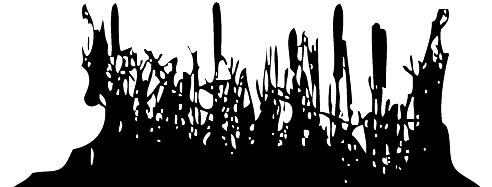Français
Finding Our Talk Season Two
- Episode 1: A Brighter Future - Mohawk
- Episode 2: Gentle Words - Maliseet
- Episode 3: The Spirit of Stories - Ojibway
- Episode 4: Language of The North - Naskapi
- Episode 5: Language of The Caribou People - Gwitchin
- Episode 6: Our Past Our Language - Secwepemc (Shushwap)
- Episode 7: Buffalo People - Dakota
- Episode 8 : Healing Power of Words - Dene
- Episode 9: Our Music is Our Language - Oneida
- Episode 10: Words from Our Scholars - Cree
- Episode 11: Words from Our Elders - Blackfoot
- Episode 12: Cultural Centres and Language
- Episode 13: The Dreamers - Dane-Zaa
Finding Our Talk Season One
Finding Our Talk Season Three
Episode 7: Buffalo People - Dakota
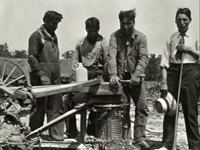 Originally occupying a region in today’s Minnesota were the Dakota, who were also called the Santee Sioux, They grew into three main groups: The Lakota, the Nakota and the Dakota whose languages are the same but with a different dialect. The Dakota are the largest of the three and are considered the mother group.
Originally occupying a region in today’s Minnesota were the Dakota, who were also called the Santee Sioux, They grew into three main groups: The Lakota, the Nakota and the Dakota whose languages are the same but with a different dialect. The Dakota are the largest of the three and are considered the mother group.
After the Sioux Uprising of 1862 the Dakota fled into British territory. Some became farmers, others, became skilled laborers, working for nearby farmers and in town. But hardships were still to occur, especially with the slaughter of the buffalo (their main resource and sustenance).
Background
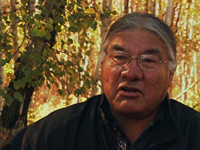 According to Lakota prophecies, White Buffalo Calf Woman will return should the Mother of all life (Earth) ever be shaken to crisis by the people living on her. Six years ago, a femalewhite buffalo calfwas born in Wisconsin giving new hope to the buffalo peoples of the Great Plains and the promise of the return of the buffalo culture.
According to Lakota prophecies, White Buffalo Calf Woman will return should the Mother of all life (Earth) ever be shaken to crisis by the people living on her. Six years ago, a femalewhite buffalo calfwas born in Wisconsin giving new hope to the buffalo peoples of the Great Plains and the promise of the return of the buffalo culture.
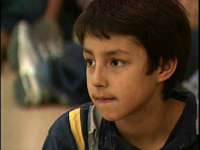 In the early 90's Wahpeton started their own bison operation called Tatonka Bison. Since then they have reintroduced the sundance ceremony to a younger generation of Dakota.
In the early 90's Wahpeton started their own bison operation called Tatonka Bison. Since then they have reintroduced the sundance ceremony to a younger generation of Dakota.
Wahpeton Dakota First Nation is one of three nations of Dakota descent in Saskatchewan. The community is situated near Prince Albert, Saskatchewan and has a population of 226 people on-reserve, with approximately 150 people off-reserve. The handful of people who are considered fluent are 60 years and older. The Dakota language itself is a minority among other First Nation languages in Saskatchewan.
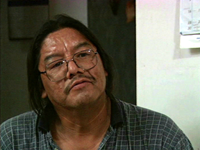 Part 1
Part 1
In this section we meet Chief Gary Standing and his family as they prepare for a Dakota naming ceremony for their granddaughter. The importance of such ceremony are vital in the community’s efforts to bring back the culture and language to the people. We talk to Gary as he mentions that many people within the community have begun to go back to their roots through many traditional Dakota ceremonies as a way to use the language.
We also meet Leo Omani, a Dakota historian and talk to him about the history of the Dakota people in Saskatchewan and their struggles they face as the smallest language group in the province. Leo mentions that one reasons for their small number was due to the 1918 tuberculosis and influenza had taken the lives of many Dakota. To ensure their survival, many Dakota married their Cree neighbors. This produced a generation of Dakota who grew up learning their Cree and Dakota ancestries. It is here we meet several families with Cree and Dakota ancestry, among them Loren Waditika. We will talk to him about his family ancestry and also accompany him as he attends a memorial feast for his father who passed away last year.
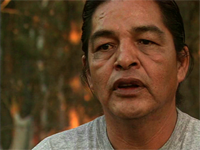 Part 2
Part 2
In this section we meet former chief Cy Standing, another Dakota historian as he talks about one of his major projects - seeing the buffalo herds revived. Although the buffalo no longer roamed his land, his people continue to depend on them for survival. As Cy leads us around the bison ranch, called Tatonka Bison, that he and Chief Gary Standing helped start almost 10 years ago. Cy talks about his people's history, including the deep spiritual connection to the buffalo. Cy blames the government for the killing of the buffalo in an attempt to get rid of the Indians. As he gazes at the buffalo around him he talks about a stronger Dakota made possible by their presence.
The connection of the buffalo and the survival of the Dakota culture and language go hand in hand. We visit the local school and meet Beverly Waditika who is the Education Coordinator for Wahpeton Dakota First Nation. The local school has recently started an unique immersion program. Held every Wednesday afternoon, all grades (Kindergarten to grade 9) are taught together by one teacher. As we tour through the school we visit an immersion class in progress.
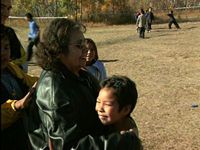 Language Keeper
Language Keeper
Before Bernice Waditika was sent away to St. Michael's Residential School in Duck Lake, she was a fluent Dakota speaker. Although she eventually lost her language, Bernice went on to become a nurse and then a teacher's aide, but it was only when she began teaching Dakota at Wahpeton Dakota Nation School many years later did she truly find her calling.
By the simple practice of relearning words Bernice quickly picked up the language of her youth. For the past 14 years Bernice has spent her days visiting classroom after classroom, spending on average 45 minutes teaching the language to children of all ages. Inevitably someone will ask a question about sweat lodges or another aspect of the culture. Bernice always obliges them and reminds them to always respect their culture. At the age of 60 she is one of the last language teachers the community has left.
